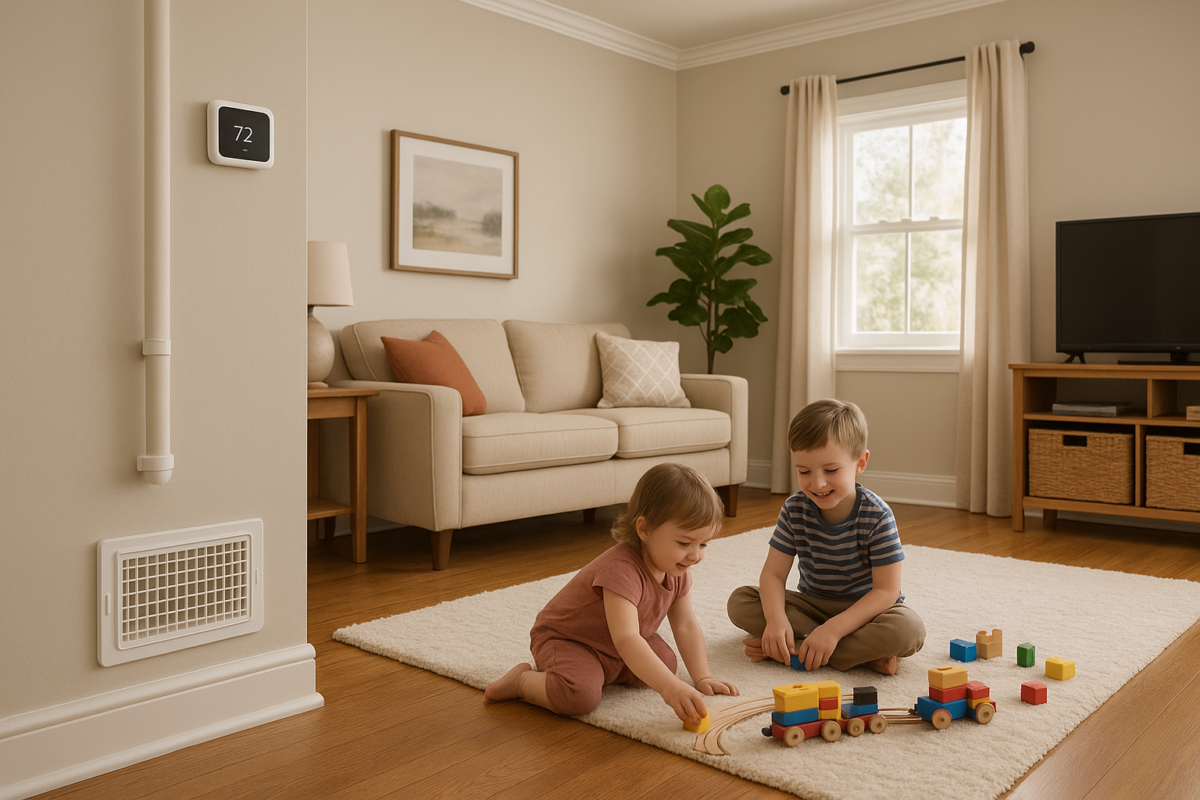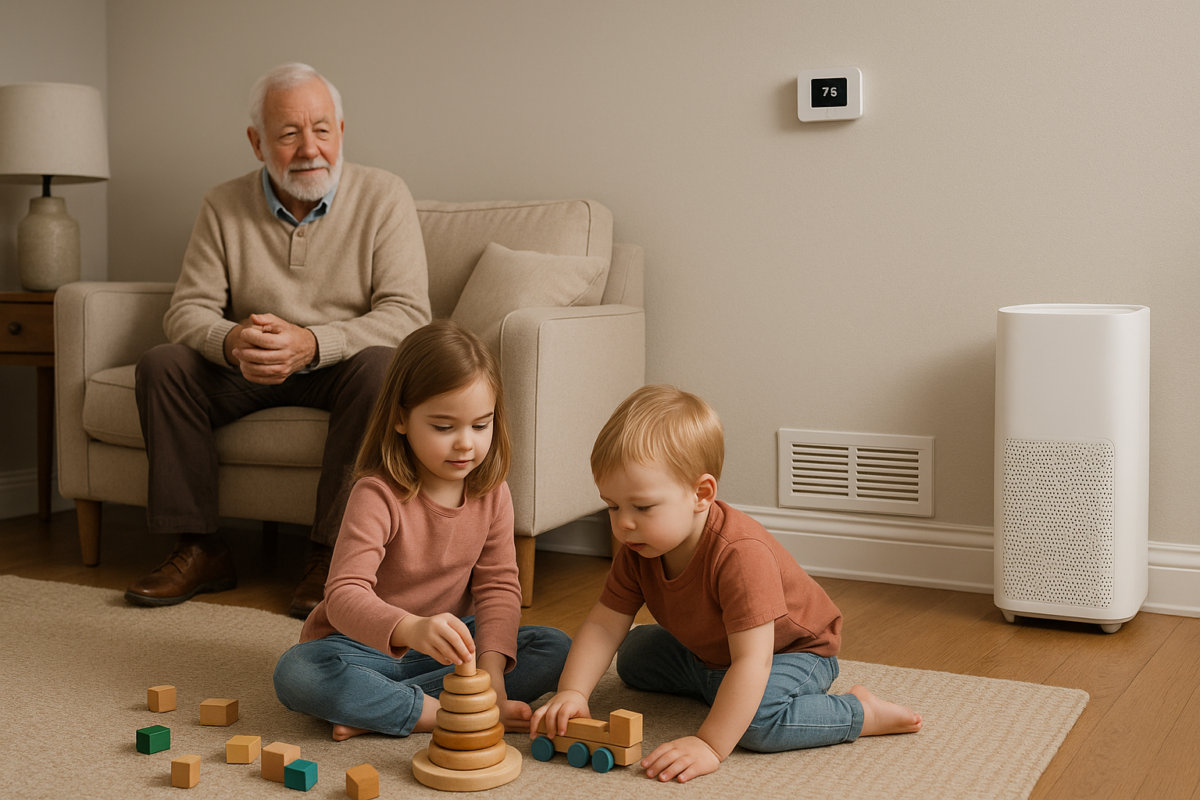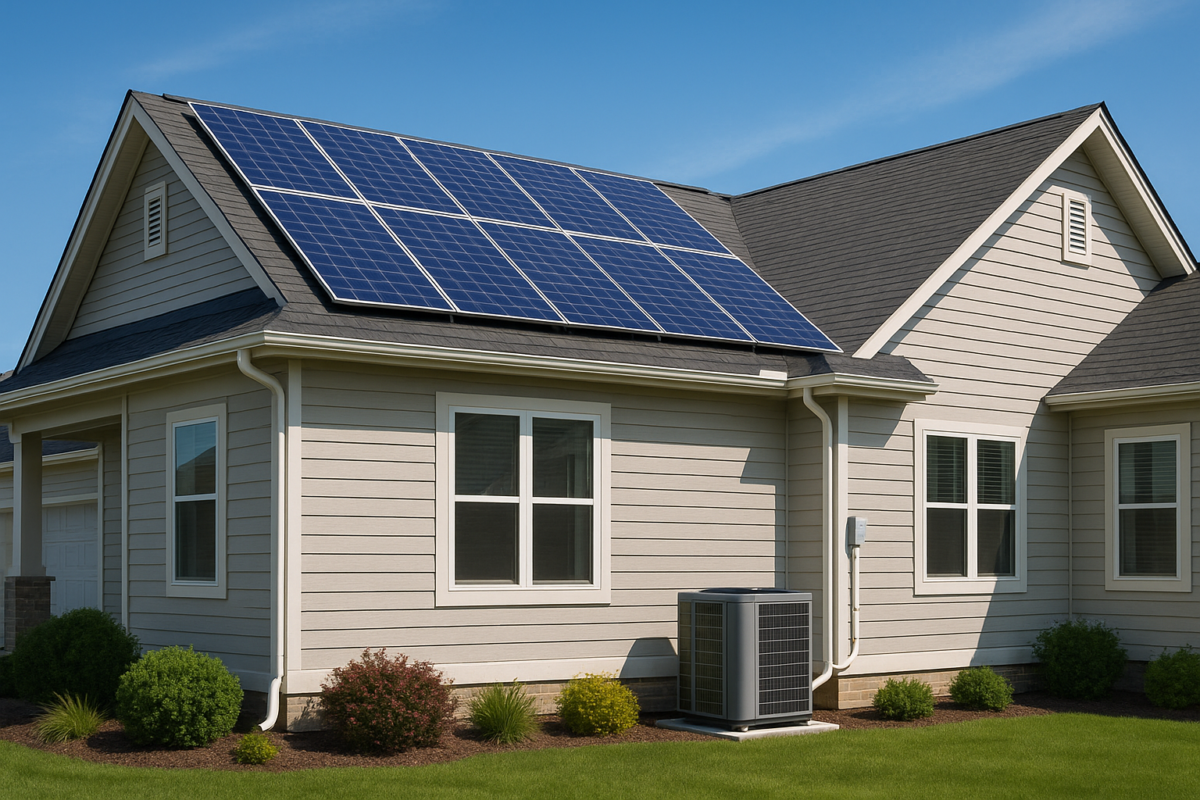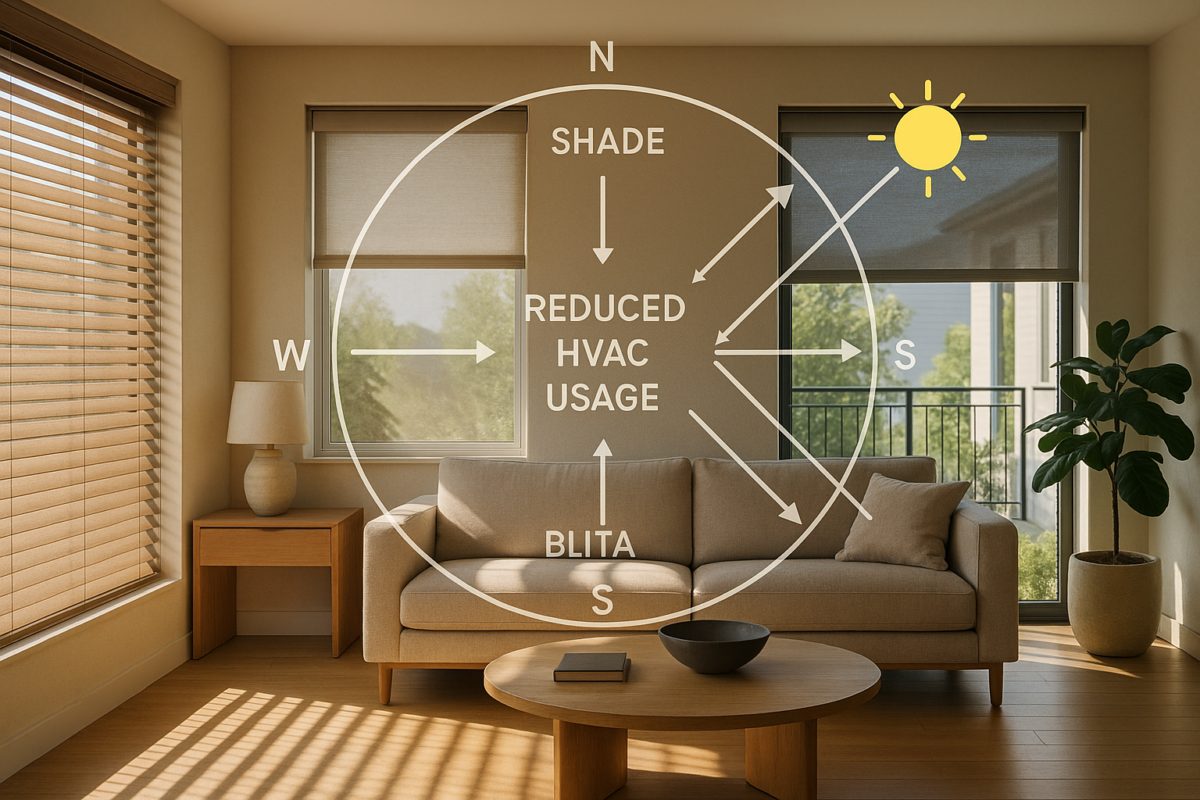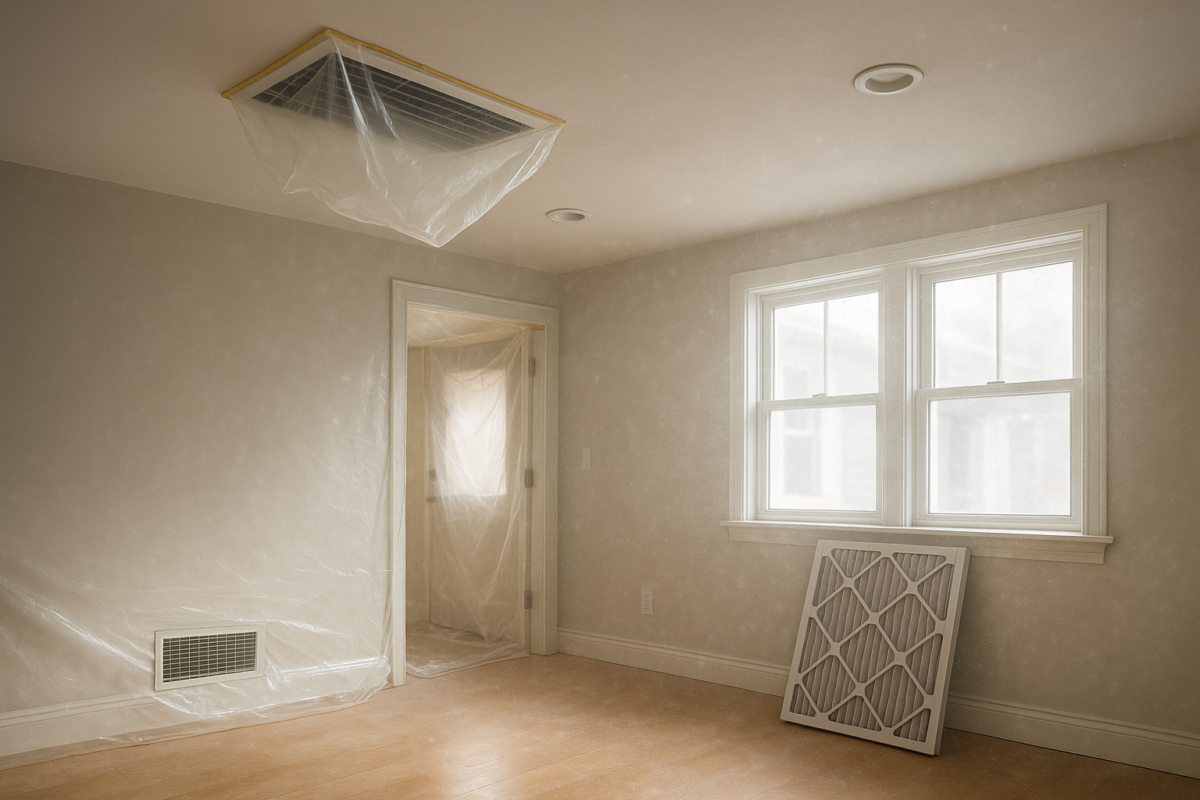Boost HVAC Efficiency with Smart Window Insulation Ideas
Looking for ways to make your house more energy efficient without a full remodel? Focusing on window insulation can give your HVAC system a powerful boost while trimming your energy bills. Many homeowners overlook how much heat escapes through windows, but with the right insulation strategies, your living space feels more comfortable in winter and summer. Whether your home is brand new or full of vintage charm, small upgrades make a significant impact. This article covers practical solutions like thermal curtains, cellular shades, window films, and caulking. Learn which option fits your needs and how to tackle installation, all while keeping your investment low and results high.
Why Window Insulation Matters for HVAC
Windows play a large role in the overall efficiency of a home’s heating, ventilation, and air conditioning system. Even after upgrading appliances or improving attic insulation, heat loss through windows can undermine your efforts. The Department of Energy estimates heat transfer through windows is responsible for up to 30 percent of residential heating and cooling energy use. A cold draft creeping in or hot summer sun pouring through the glass makes your air conditioner or heater work harder. This ramps up energy consumption and drives bills higher. Recognizing this source of waste is the first step to controlling the climate inside your home.
Beyond energy savings, window insulation solutions also mean improved comfort. No more cold spots in winter or rooms that overheat during summer afternoons. Insulated windows cut down on noise as well, making the space feel more peaceful. Quality insulation can even protect furniture and floors from sun damage over time. When paired with regular HVAC maintenance, these improvements keep your system running efficiently for years.
Understanding the Types of Window Insulation
A range of products offer different forms of insulation. By knowing how each works, you can find the best fit for your lifestyle. Some take just a few minutes to install, others require a careful approach but reward you with years of savings.
Thermal curtains use heavy fabrics and insulation layers to block heat exchange. Cellular shades use structured material with air pockets, which creates a barrier against outside temperatures. Window films adhere to the glass, improving insulation while filtering UV rays and glare. Caulking and weatherstripping fill in tiny gaps and cracks where air escapes unnoticed. Each method can be used alone or together, depending on your needs.
Thermal Curtains: Insulation with Style
Thermal curtains solve several problems with one product. These curtains consist of multiple layers, often with a core thermal lining sandwiched between fabric. The dense design limits heat transfer between your room and the outdoors. In winter, thermal curtains hold warmth inside. Closed in summer, they block the sun’s rays before they have a chance to heat a room.
What sets thermal curtains apart is their simple installation and flexibility. You can hang them from existing curtain rods, making them one of the quickest upgrades. Darker colors usually block more sunlight, but even lighter shades offer strong insulation. Most styles also enhance privacy and give you options for light control. Closing them at night keeps the chill away, while opening them during the day brings in warmth when you want it.
With various patterns and fabrics available, these curtains can match nearly any room while working in the background to regulate temperature. Their multiple layers also act as a noise buffer, dampening traffic sounds or neighborhood noise.
Cost-wise, thermal curtains present an affordable solution. Most panels are available between twenty and one hundred dollars, depending on size and material. DIY installation requires only standard curtain hardware and accurate window measurements. The payoff appears on your utility bill, with many households noticing lower heating costs after putting up quality window insulation.
Cellular Shades: Modern Insulation Made Simple
For those who prefer a slimmer profile or want a different look, cellular shades do double duty as insulation and design. Sometimes called honeycomb shades, these coverings use rows of fabric cells that trap air, creating a thermal barrier between your home and the outside world. The trapped air slows down the flow of heat, making it harder for cold or hot air to slip through the glass.
Cellular shades offer a range of appearances, from subtle neutrals to bold colors, making it easy to enhance your space. Their design works well for almost any size window. The cordless option provides a clean, safe solution, especially around kids or pets. Cellular shades work exceptionally well in bedrooms, living spaces, or anywhere steady indoor temperatures matter most.
Smart technology adds another layer of convenience. Some systems connect to phone apps or home automation platforms, so you can set the shades to close during peak sun hours or open to let in gentle morning light. This simple adjustment further helps manage the workload on your HVAC system, leading to steady comfort throughout the day.
The price for cellular shades ranges by size and material quality, typically between fifty and two hundred dollars per window. Installation involves attaching mounting hardware at the top of the window frame, snapping the shade into place, and making small adjustments for an even look. Most manufacturers include all required components for a hassle-free DIY finish.
Window Films: Advanced Barrier with Invisible Benefits
Window films present another effective method to increase window insulation. Instead of blocking light with thick fabric, films adhere directly to the interior glass. This creates a transparent insulation layer that still allows sunlight while stopping thermal transfer.
There are several varieties to suit different needs. Reflective films are popular for south-facing or sunny rooms. These options can block up to eighty percent of solar heat, keeping interiors cooler during peak sunshine. Spectrally selective films preserve more natural light but reduce infrared and ultraviolet rays. This protects flooring, artwork, and furniture from fading due to sun exposure over time. Non-reflective films reduce glare and heat without a mirror-like appearance. Homeowners often pick these for spaces where exterior aesthetics matter.
One of the top benefits of using window films is cost savings throughout the year. They require only a one-time installation but keep performing for years. Window films can increase property value if you ever decide to sell, as buyers recognize the ongoing energy efficiency gains. Many films are designed for quick application, which keeps the project budget-friendly, and are available in various finishes to suit your tastes and privacy needs.
DIY film installation usually means cleaning the glass, cutting the film to match the window’s dimensions, and applying with care to eliminate bubbles. Even basic film rolls are enough for several windows, giving homeowners plenty of coverage for a small investment.
Caulking and Weatherstripping: The Details Matter
Even the best curtains or films can only go so far if drafts sneak in through cracks and gaps. Over time, window frames settle, and small spaces develop where air slips out. Caulking fills openings around the window frame, sealing gaps that shrink and expand with seasonal changes. Weatherstripping blocks spaces between the window sash and the frame, stopping both drafts and dust from getting inside.
Materials for caulking and weatherstripping are very affordable, with plenty of options available in hardware stores. Choosing the appropriate product for the material, wood, metal, or vinyl, helps create a lasting, weather-resistant seal. Caulking usually comes in tubes and needs a caulk gun for even distribution. The process begins with a thorough cleaning so the seal adheres strongly. Applying a consistent bead along window edges prevents air leaks.
Weatherstripping strips attach to window edges, compressing when the window closes to form a tight seal. Both options take little time to install but deliver strong improvements in insulation. Tackling these fine details brings an added layer of performance to larger insulation upgrades. The outcome is a quiet, draft-free environment where your HVAC system does not have to work harder than necessary.
Combining Solutions for Maximum Savings
Using one window insulation technique makes a difference, but combining two or more approaches raises efficiency even further. Thermal curtains paired with caulking block both radiant and convective heat loss. Cellular shades along with window film tackle temperature swings and filter light for multi-season comfort. Layering solutions covers any weak spots, lowering your demand for heating or cooling throughout the year.
The most effective window insulation plans always start with an assessment. Check each window and door for drafts or cold spots. Look for faded furnishings or flooring, which signal excessive sun exposure. From there, decide how much you want to spend and select improvements that match your comfort and style goals.
Cost Considerations and Project Planning
Budget ranks high on every homeowner’s mind. The good news is that each window insulation approach fits within a typical household spending plan. Thermal curtains are available for the cost of regular window dressings, with affordable options at most big box or specialty stores. Cellular shades require a slightly larger outlay, but the investment pays off through energy savings long into the future. Window films cost less per window and can be trimmed to size for custom shapes or decorative configurations.
For caulking and weatherstripping, a little money buys plenty of material, stretching across multiple windows or doors. Many homeowners complete these upgrades in a single afternoon, so labor costs are minimal. DIY projects make these options even more appealing for those who wish to control their spending while upgrading their home’s comfort and efficiency.
Professional installation offers convenience and peace of mind if you want guaranteed results. Contacting a trusted local provider like Livinon Mechanical connects you with experienced technicians who can recommend or install the best solutions for your situation. Combining professional support with smart purchases makes the most of available resources.
How to Install Window Insulation – DIY Tips
If you want to tackle installation yourself, start by measuring each window carefully. Accuracy in measurement prevents gaps that compromise the benefit of your effort. With thermal curtains, use rod brackets that sit close to the wall so the curtain fully covers every edge of the window. For cellular shades, double-check measurements at the top, middle, and bottom of the frame since many windows are not perfectly square. When installing window film, begin with spotless glass and work with a spray bottle of water for smoother placement. Firm squeegee strokes help push out air bubbles.
Caulking goes further when old material is removed before the new bead is applied. Experienced DIYers often use a utility knife and scraper to start with a clean base. Weatherstripping works best when the area is both dust-free and dry. Most strips come with adhesive backing for easy placement but press firmly for a strong, lasting bond.
Do not forget to check instructions specific to each product. Manufacturer guides help avoid mistakes that can limit or reduce effectiveness. Take your time on each step, as a careful approach pays dividends in years of energy savings and comfort.
Window Insulation and Your HVAC System
Upgrading window insulation creates a positive chain reaction for your HVAC system. When your home holds heat in winter or redirects sun in summer, heating and cooling equipment can work less. Equipment that runs less often experiences less wear and tear, which extends the life of expensive systems. Air filters stay cleaner when windows and doors keep dust and pollen outside.
With less temperature fluctuation, your thermostat does not need to kick on as frequently. This steadier operational rhythm reduces both your energy bill and the chance of HVAC breakdowns. More consistent airflow also means better humidity control, which protects building materials and finishes from damage. If you ever upgrade to a newer or more efficient HVAC unit, properly insulated windows ensure you’ll see the full performance benefit promised by the manufacturer.
Special Tips for Older Homes
Older homes offer plenty of character but can loose a lot of energy through original windows that lack proper sealing or insulation. Replacing historic windows is not always an easy or affordable option. Window insulation offers a smart middle ground. By using thermal curtains paired with caulking or applying subtle window films, you maintain the look of vintage windows while raising the comfort level by several degrees.
Cellular shades fit older or custom-shaped window openings because they can be ordered for specialty dimensions. Temporary films or silicone seals remove when warmer weather returns, protecting the original windows and frames. Focusing on small upgrades delivers noticeable results without sacrificing the charm or structure of your house.
Long Term Payoff of Smart Window Insulation
Every dollar invested in window insulation brings dividends over time. Less heat lost through the glass translates to fewer cycles for your HVAC unit. Consistent, comfortable rooms allow for lower thermostat settings, giving you even more control over your monthly expenses. Quality window insulation upgrades give back every season, protecting both your investment and comfort.
Strategic choices like thermal curtains, cellular shades, window film, and thorough caulking remove uncertainty about staying comfortable. Simple DIY installations or professional help means every home can reach a higher level of energy efficiency without drastic changes. Keep your family comfortable, preserve your HVAC equipment, and trim your energy bill with practical window insulation solutions.


